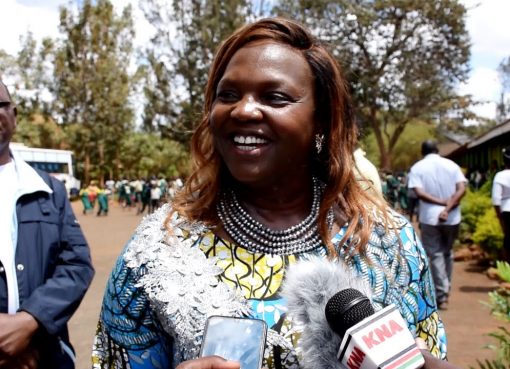The County Government of Kericho has stepped up efforts to revive sugarcane farming in the County by entering into a Public-Private Partnership initiative in establishing a sugar mill.
According to the Kericho County Executive Committee Member (CECM)-In-Charge of Agriculture, Mr.Phillip Mason, sugarcane farmers in the County have for many years incurred high costs of cane transportation to millers domiciled outside the County as farmers have been taking their cane to Muhoroni Sugar Mill, which he says is far and caters for a larger number of farmers hence delayed cane harvesting.
The only factory in the County, Soin mill, collapsed eight years ago.
Mason also says that the high transportation charges eat into the dues sugarcane farmers are paid by the millers, making it a less profitable venture and to remedy this, he says that the County Government has invited investors to put up a sugar mill especially in Soin-Sigowet Sub-County, where sugarcane farming is majorly practiced.
“Currently, there are about two such investors who have shown a lot of interest in putting up a sugar mill, which will come in handy for the farmers who have for long suffered high cost of transporting their produce to millers, in neighboring counties,” said Mason.
Mason has assured that the County Government of Kericho will continue to provide an enabling environment for investors in the agricultural sector, stressing that it is a significant backbone of the County’s economy.
He has also promised the sugarcane farmers that the County Government will also give incentives in terms of farm inputs subsidies, to increase their production, so that the upcoming mill will have a constant supply of raw materials.
“Road and water infrastructure are currently being improved to ease transport of cane to the mill and optimize mill operations,” said Mason.
Sugarcane is the third important cash crop grown in the County after tea and coffee. It is grown in four Sub-Counties of Soin/Sigowet, Kipkelion West, Belgut, and Ainamoi.
Soin /Sigowet Sub-County is the major sugarcane growing area in the County with approximately 6,000 Ha under the crop, in all four Wards, Soin-Sigowet, Kaplelartet, and Soliat.
Kipkelion West Sub-County follows with an area of approximately 1,053 Ha under the crop in Chilchila, Kunyak and Kipkelion Wards.
Belgut is next with approximately 252 Ha with the crop in Waldai Ward as Ainamoi Sub-county has approximately 37 Ha in Ainamoi and Kapsoit Wards. This brings the total area under sugarcane in the County to an estimate of 7,342 Ha.
According to the County Agriculture CEC, the sugarcane planted comprises of the old varieties such as CO421 and CO617, which are low-yielding and have low sucrose content and take 18 to 24 months to mature, which is too long, therefore, only a single harvest can be done per plot in two years.
“The average yield per hectare is approximately 47T. The County harvests approximately 172,537 T annually, which translates to Sh569,372,100.00 earnings to sugarcane farmers,” Mr. Mason said.
The Agriculture CECM said that the County Government is aware of the myriad challenges sugarcane farmers in the Soin/Sigowet Sub-County face, including low prices offered for harvested cane, delayed payment of cane delivered to mills and lack of new cane varieties planting materials.
“Sugarcane farmers are enduring many challenges and one of them is poor governance in some sugarcane cooperative societies, resulting to some members absconding to better-managed cooperatives. Also, in most cases, they lack subsidies for farm inputs to lower cost of production and transporting sugarcane to the millers, which are very expensive,” said Mr. Mason.
Other challenges sugarcane farmers grapple with include the lack of bulking sites for new sugarcane varieties for easy accessibility to local farmers for adoption.
Famers also lack specialized cane transporting trucks which are more efficient and reduce spillage of cane during transportation and old machinery in most sugar factories, which causes an increase in the cost of production.
On the other hand, most farmers lack smartphones that can be used to connect digitally to millers for cane payment and dissemination of relevant information on cane production and market dynamics.
Mason has, however, urged the sugarcane farmers to be patient, promising that the challenges will be dealt with once the County Government revives the sector soon.
By Kibe Mburu




